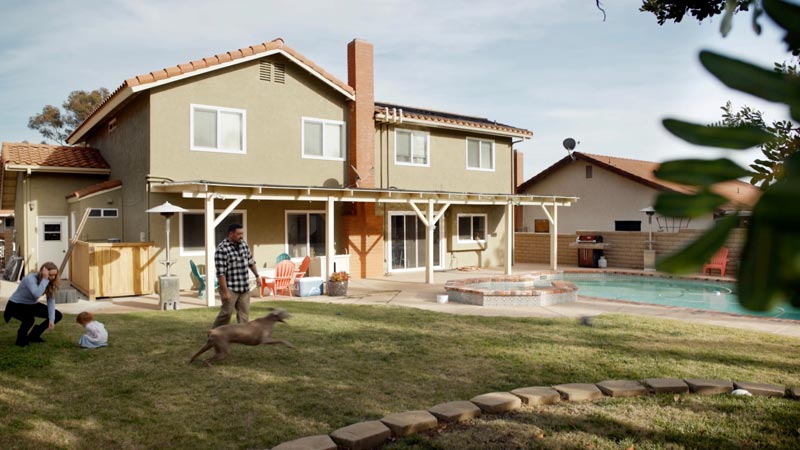What Are Termites?
Termites are one of the oldest and most prolific insects on the planet, and they colonize nearly all parts of the earth except Antarctica. Colony populations range in size from a few hundred termites to supercolonies that can contain millions of termites. Termites go from egg to nymph to adults and fulfill specific roles within the colony. A colony is divided into workers, soldiers, kings, and queens.
Workers and soldiers are typically sterile, while kings and queens mate to keep the colony growing. Subterranean species build their nests in the soil, while drywood termites build nests in the wood of structures and trees. Because both subterranean and drywood termites feed on dead plants, decaying wood, and other cellulose matter, they are considered to be an essential part of the ecology in the wild.
So what do termites do that is so scary for homeowners? We’ll answer that question with another question!
Do Termites Eat Wood in Houses?
Yes, they do eat the wood in houses, from the roof to the basement. While termites’ natural behaviors aerate the soil with tunnels, clear decayed wood, and promote plant growth are beneficial in nature, they can be devastating to homeowners.
Because termites aren’t picky about what they eat, any cellulose material will do, and that includes the wood structure and other materials in your home. Without professional treatment, a termite infestation can completely destroy a structure from the inside out. Here’s how they do it.
What Are Termites’ Behaviors?
Termites eat and destroy cellulose material like wood in a house. They access a structure by either building mud tubes from the soil or building a nest in the wood of the structure. Either way, the result is structural damage from feeding, building, and nesting that will increase steadily until the colony or colonies are treated.
What Are Termites’ Roles in a Colony?
When termite nests become overpopulated, winged swarmers leave the colony, mate, and create new colonies. This cycle will continue as long as the termites aren’t controlled and can find food like the wood in your home. The worker termites make up the majority of the colony’s population and are the ones you’ll find feeding in attics, basements, and behind walls.
Termite Facts

Did you know if you live in Southern California, your home could become infested by drywood termites, subterranean termites, and dampwood termites? While each species has a unique process for invading a structure, both types of infestations can destroy your home. Here are some other termite facts you might want to know:
- Termites cause over 5 billion dollars in property damage a year in the United States as they silently eat away at homes like yours.
- The subterranean termite needs lots of moisture and must travel back and forth to the nest, but drywood termites don’t so they can nest anywhere they find wood.
- Termite queens enjoy the longest lifespan of any insect and can lay thousands of eggs per day.
- Termites are tiny, but there are so many that the total weight of all termites on earth is more than the total weight of all humans.

What To Do If You Have Termites
You can check for signs of termite infestation yourself when you know what to look for. Small brown, beige, or black droppings around baseboards, window sills, and door jams may indicate termite presence and termite damage. Brown mud tubes or tunnels can indicate serious infestation. If you discover either of these termite damage clues or are unsure if your home is protected against termites, call Hi-Tech Termite Control for a professional termite inspection.
Next-Generation Termite Control in Southern California

Hi-Tech Termite Control’s microwave technology is a safe, effective, and eco-friendly termite control option. In 1993 microwave termite treatments were tested by the state of California and had a 97.4% efficacy rate on the structures tested.
Microwaving is used in conjunction with state-registered chemicals such as Bora-Care to treat drywood and dampwood termites. For subterranean termites, Hi-Tech Termite Control uses Altriset, a state–registered eco-friendly termiticide for soil treatments or slab foundation injections.
For severe termite infestations, fumigation may be the only answer. While the treatment requires tenting and uses strong termiticides, it may be the only solution guaranteed to rid your home of termites.
From plant-based localized treatments to fumigation, our services are guaranteed. Have your home inspected by one of our professional termite inspectors for free. No risk and no obligation—just the peace of mind you’ll get from knowing the facts.